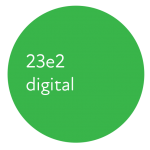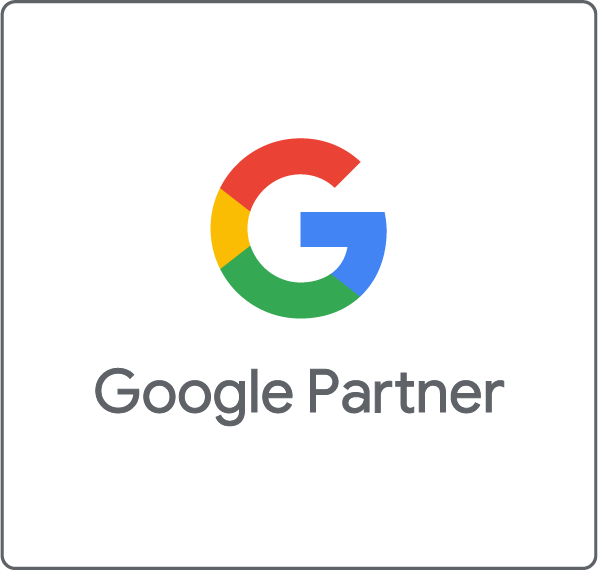© 23e2 Business Services Inc. | Working With 3rd Parties
Rank Your Blog Higher On Google

Does this sound familiar?
You spent hours writing a compelling blog post for your website. You published it. A few days later, you discover that no one has seen it because it’s nowhere to be found on the search results.
Trust me, we’ve all been there.
You may start to doubt your writing abilities, but what if I tell you that your content might not be the problem?
Google’s algorithm looks at more than just your written content. There are other SEO factors that you need to start optimizing to increase your blog’s chance of appearing on the first page of the search results.
In this post, we will be showing you 5 actionable tips you can start implementing to boost your blog’s ranking in the search results.
Let’s get started!
1. Optimize Keywords

Optimizing for the keywords you’re trying to rank for is one of the most important components to rank high on the SERP. Without keywords, search engines will have a hard time determining what search term you want your blog to show up for.
To find the perfect keyword for your blog, you need to understand what search terms your audience is using to find your content.
There are many keyword research tools available to help you with this process such as Ahrefs, Moz, Google keyword planner, and more. Many of these tools are free to use, but you will have to pay if you want to use their more advanced features.
In this example, I will be using Ahrefs to look for keyword ideas for a blog about pasta recipes.
1. Head over to the keyword explorer and enter your primary keyword

2. Go to ‘Phrase match’ to get a list of long-tailed keyword ideas.
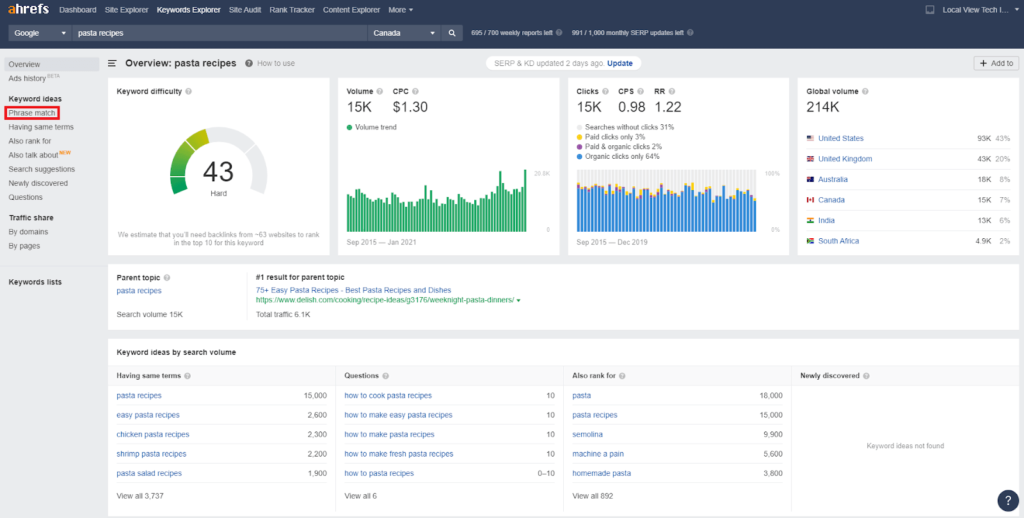
3. Analyze the results, and look for the keywords that best suit your content.
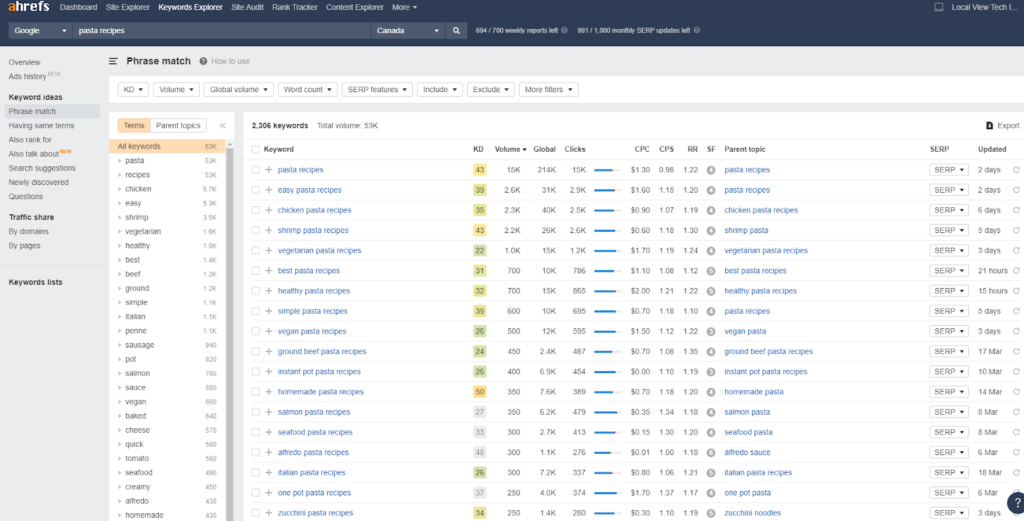
Some of the key terms you know are:
- Keyword difficulty (KD): An estimate of the difficulty to rank for the top ten organic search results. The higher the score the more difficult it is.
- Volume: Average monthly searches for the keyword.
- Cost per click (CPC): Average cost advertisers pay for each ad click.
Ideally, you want to use keywords that are low in keyword difficulty, high in volume, and high cost per click.
- Low keyword difficulty means you stand a better chance of ranking to the top ten results.
- High volume means that a lot of people are using that keyword to find content.
- High CPC means there’s a higher likelihood of conversion.
Now that you have selected keywords for your blog post, it’s time to start using them in your blog post.
Here are some ways you can effectively use keywords in your blog post:
Include keywords in your titles
Including your keywords in your titles is a quick and easy way to improve your rankings in the search results. (Tip: Starting your title with your keywords usually results in higher rankings.)
Use keywords in your headings
Headings are a way of splitting up your content into digestible chunks. Including keywords in your headings can help Google better understand that your content is relevant to that keyword.
Sprinkle keywords in your post
It’s useful to occasionally mention your keywords throughout your post. This doesn’t mean you should include your keywords in every sentence as this can negatively impact your rankings. What you should do is naturally use your keywords where it’s relevant. This is to prevent search engines from mistaking it for ‘keyword stuffing’.
LSI keywords
Latent Semantic Indexing (LSI) keywords are search terms that are related to your primary keyword. This is to help users and searchers better understand what your content is all about. A good way to find LSI keywords is to use the ‘related searches’ feature on Google.
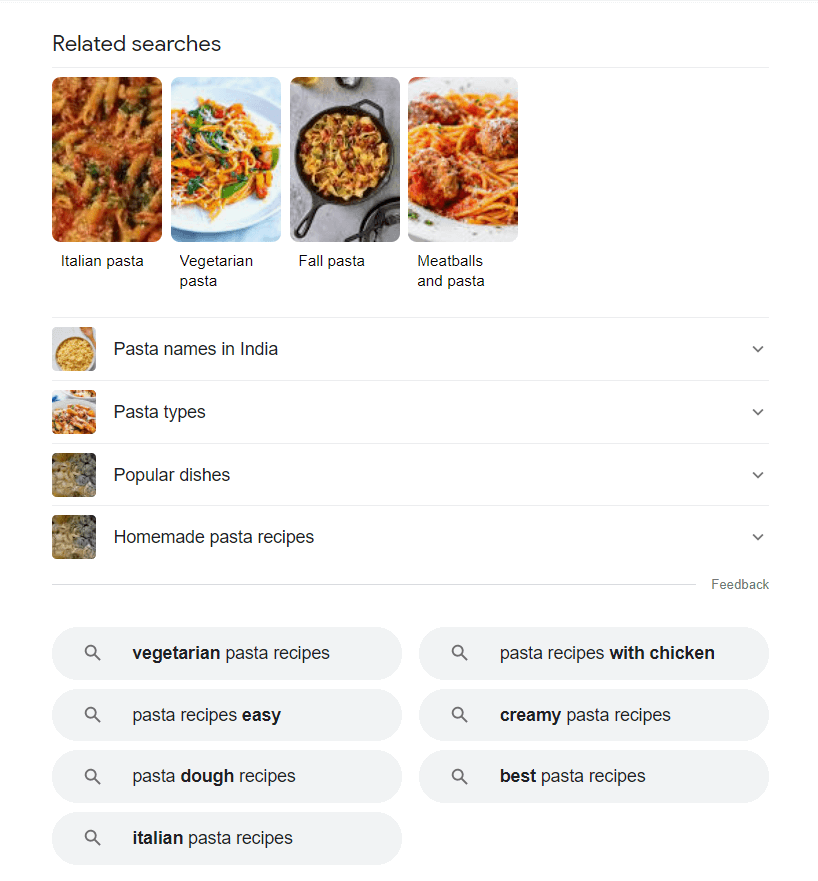
2. Content-Structure
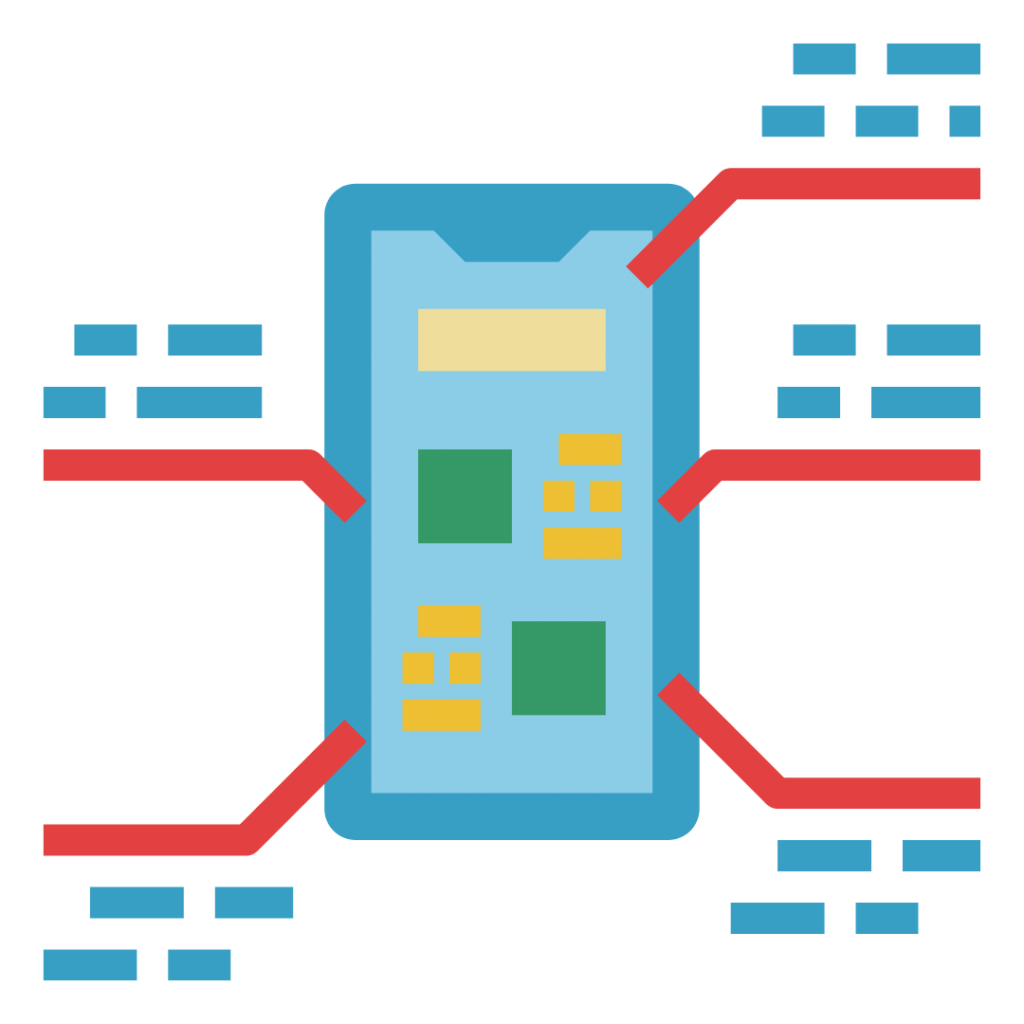
How you structure your content is just as important as the information you provide. You need to structure your content in a way that creates an enjoyable reading experience for your audience.
Here are some ways you can optimize your content structure for the search engines.
Content length
Google is more likely to show in-depth content that contains a lot of useful information. Usually the longer the content, the better it’ll rank. Ideally, you should be aiming for around 2000+ words per article.
Although this is not always the case. Perfect example is our customer Eco Stone.
Sometimes shorter but more engaging content can rank higher than those with a higher word count. So what you should focus on is creating quality content that people will want to read.
Use Headings
Most visitors won’t read your entire article. Instead, they like to skim through your article and find the most important points. Thus, you need to break up your article into digestible chunks to make it easily scannable.
To do this, you need to write in short sentences, use headlines to separate points in your article, and use bullet points to highlight key ideas.
Consistency
Google’s goal is to always provide the most relevant results to its users. To increase relevance, you need to be consistently updating your articles with the latest information. This tells Google that your content is the best result to be served to its users.
This doesn’t mean you need to create a completely new post. You can update your older posts (6 months+) with brand new information to keep them fresh and relevant.
3. The Nitty Gritty

So far we have discussed how to optimize the content itself, but other on-page elements also need to be considered. These factors help tell search engines and users that they are at the right place.
Here are some of these factors you can start optimizing for:
URL
You want to create a clear and readable URL to help both visitors and search engines know that they are at the right place. For example, if your article is about ‘homemade pasta’. Then your URL should look something like this ‘www.yourwebsite.com/homemade-pasta’.
This can help with SEO as it includes your keyword in your URL, as well as improving CTR as it makes it appear more relevant.
Meta description
This is the description your user will see for your post on the organic search results. Google by default will use a random snippet from your article as the meta description.
This is not the best idea.
Instead, you need to create a compelling description of why users should click on your link.

Adding Alt text
Alt-text is descriptions of an image to help those who don’t have access to the image understand what it is. They also allow search engines to better crawl and rank your website.

“<img src=”chocolate-cake.jpg” alt=”chocolate cake with strawberries on top”>”
Most people ignore this part by simply uploading an image and leave it at that. But if you want to further increase your chances of landing on the first page of the search results, you don’t want to overlook optimizing your images
You can optimize your image by including your keywords in the filename and the alt-text. By doing these two simple things it can be the difference of you appearing on the first page rather than the second page.
4. Internal Linking
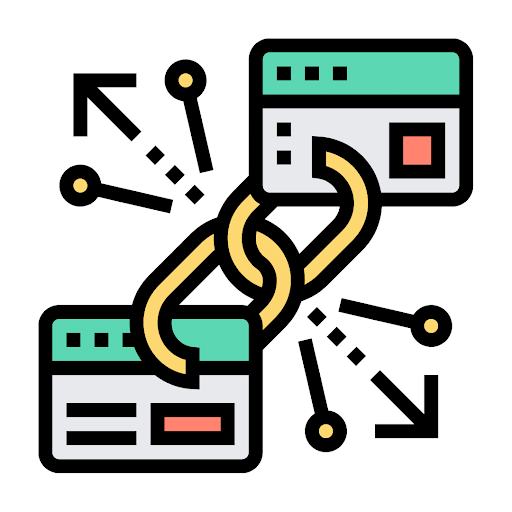
Internal linking refers to the process of adding links that point to other pages on your website. This is a quick and easy way to help Google crawl your site to find the contents you have to offer. Additionally, it will create a better user experience for your visitors, as they can learn about related topics as they read your article.
Here are some tips to create effective internal linking:
Improve Anchor Text
Anchor text is the clickable text which redirects users to another page on your site. You want to avoid using generic anchor text like click here or learn more. Instead, use keyword-rich anchor text that accurately reflects the content that you are linking to. For example, use phrases like “build links for SEO”.
Fix broken links
You don’t want to get your visitor’s hopes up when they click on your hyperlink only to find an ‘error 404’ message. This not only creates a negative user experience but also impacts your ranking in the search engines.
To find broken links you can use Google Search Console to crawl for broken links on your site. Once you have found your broken links, you can create a 301 redirect to seamlessly redirect the page to a new location.
5. Load Speed
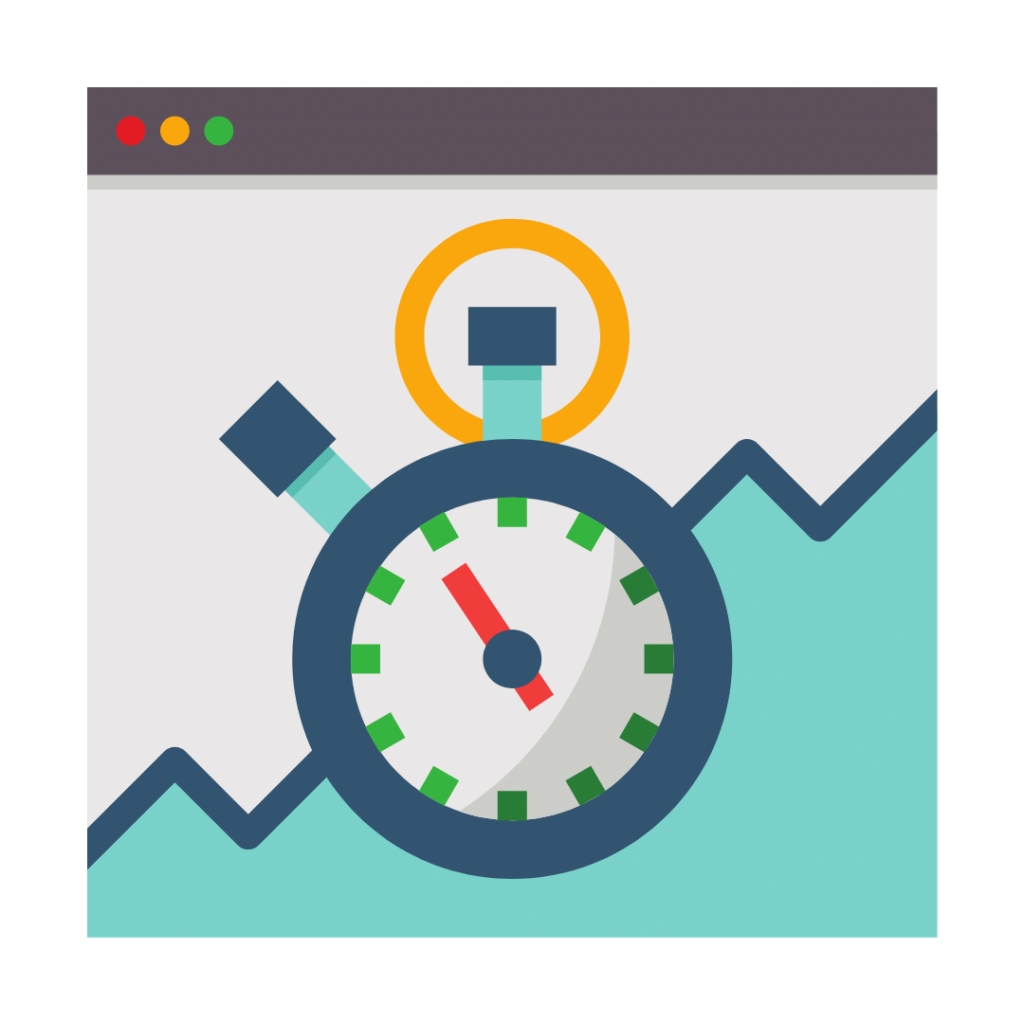
Users want to access their content fast. According to a study by Unbounce, “Pages that load within two seconds have an average bounce rate of 9%, while pages that take five seconds to load have a bounce rate of 38%.” This is why Google evaluates site speed as one of its signals for ranking pages.
The faster your page loads, the better the chance of that page ranking for the first page of the SERP.
Here are some ways to increase your page speed:
Reduce Image size
You want your images to have a small file size without reducing the noticeable quality of the image.
To do this, you will need to choose the right file types for your images:
JPEG: They generally have the smallest file size and are a great option for photographers and realistic images.
PNGs: These typically are larger in file size but provide better quality when it comes to graphics with fewer than 16 colours.
Once you have your file type selected, you can use tools like Imageoptim, Shortpixel, or Kraken.io to compress the file size without affecting the quality of the image.
Limit redirects
We’ve touched briefly on how redirects can help fix broken links. But having too many redirects can also negatively impact your page’s load speed. This means you should only use redirects if they serve an important purpose for your website.
Browser Caching
Every time you visit a website, your browser will store pieces of information (Images, HTML, CSS, JavaScript) on the page to your hard drive. This makes it so that your browser won’t have to reload the entire page every time you revisit the page.
To leverage your browser caching, you should set a cache time of one week to one year for assets that rarely change such as your company’s logo.
Key Takeaways

If you want your blogs to rank higher in the search engines, you have to work on more than just the content of the blog itself. From this article, we’ve looked at the other contributing factors which can impact your blog’s rankings.
- Conduct keyword research to match your content to your audience’s search intent. Improve user experience by using a clear and concise content structure that allows your audience to skim your content.
- Optimize your URL, alt text, meta description to help both users and search engines understand what your blog is about before they even click it.
- Use internal linking to make your website more crawlable, and make it easier for your visitors to discover other contents on your website.
- Improve the load speeds of your pages to provide your visitors with instant access to your blogs.
By following the tips and strategies discussed in this article, you will make a huge difference in SEO for your blogs.
Keep in mind that SEO is not something that you will see drastic results overnight, it is a gradual process. As long as you stay consistent with your SEO efforts, you will surely see a positive impact on your rankings and traffic!
